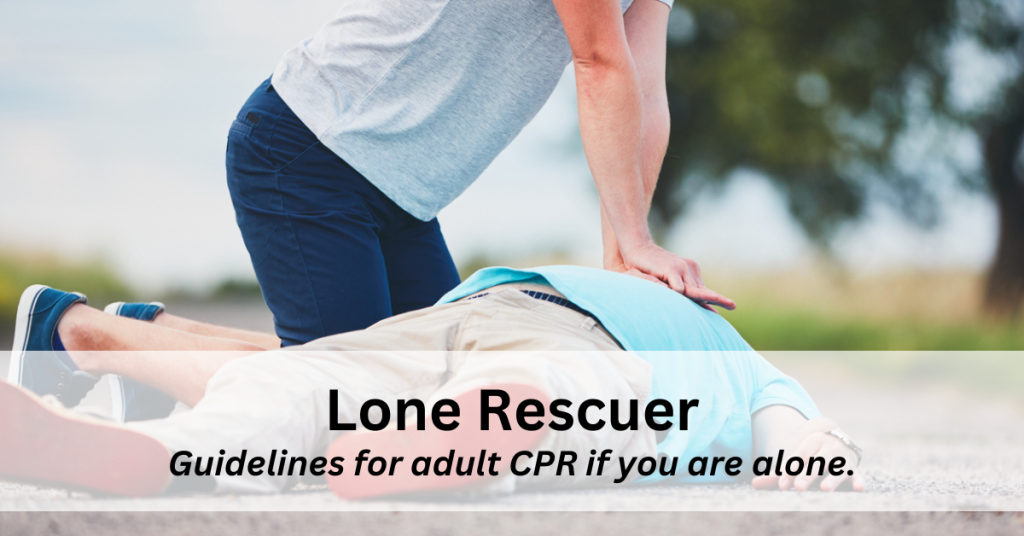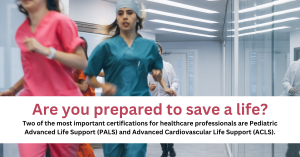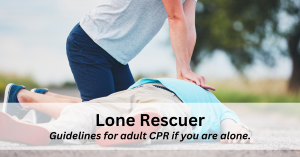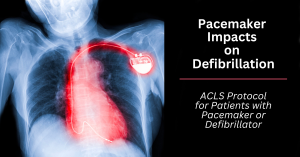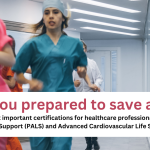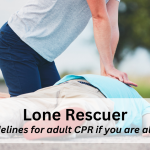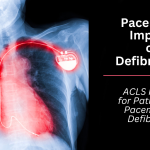Guidelines for adult CPR if you are alone.
Performing CPR on an adult can be lifesaving, but what happens when you are alone and faced with such a situation? In these circumstances you may feel compelled to start CPR alone, but this may not be the optimal approach. In this blog post, we will discuss the guidelines for adult CPR when you are alone and why it’s better to leave the victim to retrieve an automatic external defibrillator (AED) and call for help.
Performing CPR on an adult involves two key actions: chest compressions and rescue breathes. When a person’s heart stops beating, blood cannot circulate throughout the body, and vital organs can quickly suffer irreversible injury. Chest compressions aim to manually pump the heart, while rescue breaths are designed to oxygenate the blood manually circulated. If performed correctly, these actions can maintain adequate perfusion of vital organs with oxygenated blood until emergency medical services arrive.
Should I leave the victim if I am alone to call for help?
Why is this better than staying with the victim and continuing CPR?
If you are alone and come across an unresponsive adult, the first thing to do is to check for responsiveness. Tap the person’s shoulder and shout, “are you okay?” If they do not respond, call for help immediately to activate emergency services. If there is no one else around, you can leave the victim to get an AED or call for help yourself. This is because if you stay with the victim and continue CPR (without an AED), you are delaying the arrival of professional help with an AED. The thing to keep in mind is that early defibrillation will result in the best chance for survival. While effective CPR is important, the focus should be on early defibrillation.
If you have an AED you should apply it to the victim immediately and follow the prompts provided by the AED. If you do not have an AED, after calling for help you should start CPR immediately. Continue CPR until help arrives.
In summary, performing CPR on an adult when you are alone can be a daunting experience, but it’s essential to act quickly and call for help immediately. By leaving the victim to get an AED or call for help, you can ensure that an AED and professional help arrives as quickly as possible which can improve the chances of survival. If you are alone and unwilling or unable to perform rescue breaths, remember to focus on chest compressions and aim for a rate of 100 to 120 compressions per minute. Compression-only CPR is better than not performing CPR. By following these guidelines, you can provide potentially life-saving assistance to a victim of cardiac arrest.
For answers to other questions like these please visit our Clinical Pearls page here.

